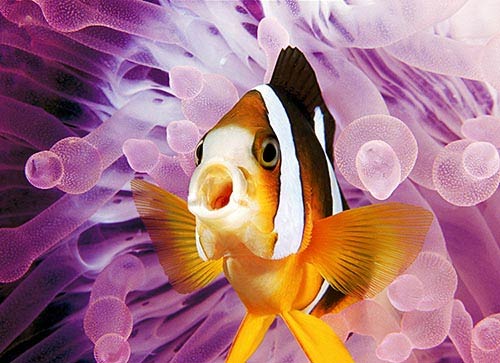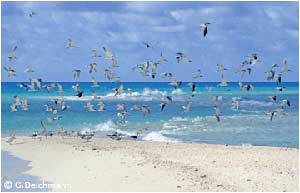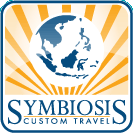Micronesia Diving
Micronesia Diving
Palau
Palau

 Palau is one of the world's truly spectacular scuba diving locales, with coral ...
Palau is one of the world's truly spectacular scuba diving locales, with coral ...

 Palau is one of the world's truly spectacular scuba diving locales, with coral reefs, blue holes, WWII wrecks, hidden caves and tunnels and over 60 vertical drop-offs. It's the meeting place of three major ocean currents, which bring abundant food supplies and an enormous variety of marine life to the area. Thanks to that, the waters surrounding the Rock Islands literally teem with over 1,500 varieties of reef and pelagic fish and more than four times the number of coral species than is found in the Caribbean. If you're a diver, you probably already know this, and if you've ever thought about learning, Palau is the place.
Palau is one of the world's truly spectacular scuba diving locales, with coral reefs, blue holes, WWII wrecks, hidden caves and tunnels and over 60 vertical drop-offs. It's the meeting place of three major ocean currents, which bring abundant food supplies and an enormous variety of marine life to the area. Thanks to that, the waters surrounding the Rock Islands literally teem with over 1,500 varieties of reef and pelagic fish and more than four times the number of coral species than is found in the Caribbean. If you're a diver, you probably already know this, and if you've ever thought about learning, Palau is the place.
Palau is world renown for marine bio-diversity and an abundance of large pelagic animals that includes schools of sharks and lots of manta rays. Its warm clear tropical waters are legendary amongst divers for dramatic coral encrusted walls rising from the depths to within inches of the surface. Home to over 1,300 species of fish and more than 700 species of coral, Palau also offers exciting wreck diving with one of the Pacific's largest collection of intact WWII shipwrecks and plane wrecks.
Palau was the headquarters of the Japanese command in Micronesia and was heavily fortified by the Japanese in the years leading up to WWII in the Pacific. Malakal Harbor was a major forward supply base for Japanese shipping.
On March 31, 1944 U.S. dive-bomber strikes from aircraft carriers Yorktown and Bunker Hill, of Carrier Task Force 58 destroyed over 50 warships and airplanes of the Japanese Imperial Forces, making Palau's western lagoon their final resting place.
Palau is a diver’s dream! A true “one stop shop” when it comes to diving! From sheltered coral gardens filled with colorful reef fishes and lots of turtles to current swept plateaus patrolled by schools of sharks and barracudas, Palau offers a wide and wonderful range of diving for divers of every interest and skill level. Healthy reefs, stunning walls, beautiful hard corals and soft corals, lots of sharks, huge mantas, turtles on every dive and huge schools of fish, tiny seahorses, elusive mandarinfish and lots and lots of tiny critters, all topped off with an amazing collection of WWII wrecks! Whatever your diving pleasure, level of interest or experience level, Palau diving is sure to please!
Palau's richly abundant waters also provide wonderful leisurely snorkeling and free-diving too! See turtles, sharks, barracuda and multitudes of colorful reef fish as you glide over dazzling coral reefs.
The majority of diving in Palau consists of drift diving along the beautiful walls, plateaus and coral gardens of the outer barrier reef, a forty minute boat ride through the picturesque rock islands.
Need further testimony? Palau was named the number one Underwater Wonder of the World by CEDAM International, an organisation of divers, marine scientists and conservationists. The southern end of the archipelago is particularly worthwhile. If you're sticking close to the main tourist area, the beach fronting the Palau Pacific Resort has some of Koror's best snorkeling, with rainbows of tropical fish, platter and mushroom coral and giant tridacna clams in full view. That said, no one really comes to Palau to snorkel in Koror. The real action is in and around the Rock Islands, and it's worth whatever it takes to get yourself out there. Probably the most surreal snorkeling experience you'll ever have is waiting for you at Jellyfish Lake, a saltwater lake made famous by the National Geographic TV special Medusa. A ten-minute jungle trek inland, it pulsates with millions of harmless, transparent jellyfish, swimming en masse and following the sun.
REGIONAL MAP
The Palauan archipelago was raised from the Western Pacific about 35 million Years ago. The Pacific tectonic plate collided with, and was driven under the eastern edge of the Philippine tectonic plate. Palau is made up of over 300 islands, some volcanic in origin, others porous limestone.
HISTORICAL BRIEF
Palau was first brought to the attention of the outside world when Captain Henry Wilson of the English vessel “Antelope” was shipwrecked on Palau's barrier reef near the island of Ulong in 1783. With assistance from Koror's High Chief Ibedul, Captain Wilson and his crew used wreckage of the Antelope to build another vessel and sailed away three months later.
Joining them on their journey back to England was Lebuu, son of the high chief. Word of Captain Wilson's voyage spread, leading to further European contact and in 1885, Spain was granted control of Palau by Pope Leo XIII. In 1899, Palau was sold by Spain to Germany who quickly established mining and other operations tapping Palau's resources.
Following Germany's defeat in World War 1, the islands of Palau were granted to the Japanese under the Treaty of Versailles in 1919 and by 1922 had become the administrative headquarters for Japanese controlled territories in Micronesia and the South Pacific. Japan closed off Palau (and their other possessions in Micronesia ) from the rest of the world and began heavy fortification of the islands. Palau saw heavy fighting during World War II, including massive aerial bombardments of Koror launched from fast carrier task forces and particularly during the assault and liberation of Peleliu Island by U.S. Marines which resulted in horrendous casualties on both sides. Remnants of WWII are still visible throughout Palau today including a huge fleet of ship wrecks and plane wrecks resting at the bottom of Palau's inner lagoon.
Following Japan's defeat in WWII, the Caroline Islands which include Palau, Yap and Truk, the Marianas Islands which include Saipan, Tinian and Rota, and the Marshall Islands which include Bikini Atoll, became United Nations Trust Territories to be administered by the United States.
On October 1, 1994, Palau became the last of the Trust Territory islands to gain independence following the signing of a Compact of Free Association with the United States and became the newest member of the United Nations. While Palau continues a very close relationship with the United States, it is nonetheless an independent republic and sovereign nation.
GEOLOGY, BIOLOGY AND BIO-DIVERSITY
Geology
The Palau Islands are an archipelago composed of about 350 islands and atolls having an area of approximately 160 square miles. Babeldaob is the largest island, having an area of 128.5 square miles. The highest altitude is Mt. Ngerekelechuus in its northwestern part, 794 feet above sea level. Palau can be classified into four types of island: volcanic; reef and atoll; low platform; and high limestone. Several of the islands are a combination of these four basic types. The volcanic islands of Babeldaob, Meyuns, Malakal and Koror make up most of the land area.
All the islands except two small atolls to the north and the islands of Angaur and Peleliu to the southwest are enclosed within the barrier or fringing reef.
Palau's eastern shore drops off steeply to the Palau Trench which reaches a maximum depth of 27,000 feet about 30 miles offshore while the western shore slopes gradually to depths of 18,000 feet about 250 miles to the west.
Marine Bio-Diversity
Palau is located at a cross roads where the enormous Pacific Ocean meets the Philippine Sea, creating one of the worlds' richest zones of tropical marine bio-diversity, making it a truly world-class scuba diving destination that few places on the globe can rival. Palau's marine eco-systems include barrier reefs, fringing reefs, seagrass beds, marine lakes and mangrove forests.
Palau is internationally renown for its' marine bio-diversity which includes over 1,300 species of fish, an abundance of large pelagic animals, and over 700 species of corals. Palau was chosen by National Geographic Society as the first Underwater Wonder of the World and was featured on Discovery Channels “Living Edens” series as one of the world's last living “Edens”. Palau is home to one of the highest number of species not found anywhere else in the world and its marine habitats support a greater density of coral, fish, and other invertebrates than any other place on Earth. Seven of the nine species of giant “Tridacna” clams are found in Palau along with the world's most remote population of Dugongs.
Terrestrial Bio-Diversity
While best known for amazing marine bio-diversity and a reputation as an underwater wonderland for scuba divers and snorkelers, Palau's terrestrial bio-diversity is equally diverse and stunning, making Palau an absolute treasure trove for avid birders and terrestrial naturalists of almost every interest.
Terrestrially, Palau is home to Micronesia's largest resident populations of bird, animal and plant species. The main island of Babeldaob is the second largest landmass in Micronesia (after Guam) and is recognized as one of the largest undisturbed tropical rainforests in Micronesia. Babeldaob is home to Ngardok Lake and Ngermeduu Bay, the largest natural lake and largest estuary in Micronesia , respectively. Palau has over 1,260 species of plants including over 800 that are native.
CLIMATE & WEATHER
Located approximately 7 degrees north of the equator Palau enjoys sunny tropical weather and pleasantly moderate temperatures year-round that average 82° F / 27° C. As a tropical island Palau is subject to rainfall throughout the year though more frequently between July and October. It's not unusual to have short but quite heavy daily showers early in the morning and late afternoon. Annual rainfall averages around 150 inches per year and the average relative humidity is 82%. Palau is located close enough to the equator to be considered outside the primary typhoon belt and has not suffered from a major typhoon for almost 20 years. However, if and when typhoons form in the region Palau can be subject to strong winds and very wet conditions for a few days. While diving is excellent year round, the best diving season is considered to be between late November and early June.
Water temperatures vary little throughout with the average temperatures being a pleasantly comfortable 82F / 27C year. A 3mm full or shorty wetsuit or dive-skin is suitable for most guests, while others prefer the freedom of wearing swim suits / board shorts and a t-shirt or rash guard. Board shorts, swim suits and rash-guards are for sale at dive shops/stores.
HOW TO GET THERE
Palau is located slightly north of the equator in the Western Caroline Islands, slightly south of Guam, USA and east of the Philippine Islands (approximately 7 degrees 20' N x 134 degrees 30' E).
Continental Micronesia is the only airline providing REGULARLY SCHEDULED flights to and from Koror International Airport in Palau (ROR), with daily direct service from Guam, USA (GUM) and service twice a week from Manila, Philippines (MNL). From the U.S, Continental offers departures from Newark, Houston or Los Angeles via Honolulu, through Guam on to Koror. Flight times to Koror from Guam and Manila are approximately 2.5 hours.
Other airlines serving Koror include Japan Airlines from Tokyo, China Airlines from Taipei and Aseana Airlines from Korea, however all of these flights are presently CHARTER flights and may not be generally available to the public.
Flight schedules are subject to change. Please check with your travel agent or the airline website for the most current flight information.
Additional route options to Koror, Palau include:
From Europe:
China Airlines via Taipei to Koror
Cathay Pacific via Hong Kong to Manila
KLM via Bangkok to Manila
Emirates via Dubai to Manila
From North America:
Philippine Airlines from San Francisco or Los Angeles daily service direct to Manila. Connect on Wed and Fri to Koror.
Northwest Airlines via Japan to Guam - Koror.
All Nippon Airways (ANA) via Japan to Guam - Koror.
Many of our travel agent partners offer significant savings on complete airfare, hotel and tour packages with Sam's Tours. Click here for a list of our recommended agents.
Entry Requirements
All visitors must present a passport valid for more than 6 months and a return or an onward ticket to their next destination. Passengers without a ticket out of Palau will be denied boarding in Guam or Manila. Visas are not required. Entry permits are issued upon arrival and visitors of all nationalities are permitted to stay up to 30 days at no charge. Entry permits may be extended by 30 days at cost of $50 per extension. A maximum of two extensions is permitted for a total stay of 90 days. U.S. citizens are permitted to stay up to one year at no charge. Visitors are not permitted to work.
HELPFUL LOCAL INFORMATION
Banking & Currency
U.S. dollar is the official currency of Palau. Travelers checks and all major credit cards are accepted at most businesses. There are several banks (Bank of Hawaii, Bank of Guam, Bank Pacific) and plenty of automated teller machines (ATM's) around town.
Health & Medical Services
Palau National Hospital is a well-equipped and professionally staffed facility with an experienced Barotrauma Team. In addition there are excellent private clinics, out-patient surgeries and pharmacies on the island. Local supermarkets carry most common over-the-counter medications.
Dress Code
Palau is a tropical island and a very casual place when it comes to attire. T-shirts, shorts and flip-flops (rubber slippers) are appropriate at all times with very few exceptions (thankfully, ties haven't become a hit here)! For those who want to dress up, a polo shirt, aloha shirt or blouse will usually suffice. Slacks and dresses are only required for more “formal” affairs. Short shorts and swimsuits are okay at the beach, pool and around the dive shop but not appropriate around town. When heading out to dinner, keep in mind that many restaurants are heavily air-conditioned!
What to Bring
Pack lightly! Palau is a warm tropical destination and casual attire (t-shirt, shorts and flip-flops) are perfect! If you're staying a little longer, laundry service is very cheap and low cost T-shirts and shorts are available at almost every store.
Dining & Food
Palau has lots of good restaurants with reasonable prices to choose from including American Diner, Indian, Japanese, Palauan and more. Top favorites are TAJ Indian Restaurant (a must) and Kraemer's Café (a fun bar with great food).
Electricity
110 Volts 50/60Hz with U.S. type flat 2-pin plug or 3-pin (two flat pins and rounded ground pin). There is 220 VOLT service at the dive center for battery charging.
Language
English is spoken by almost everyone on the island. Palauan is the local language. Japanese & Chinese also widely spoken.
Medical Services
Palau National Hospital is a well-equipped medical center with excellent professional medical staff. There are several private outpatient clinics and pharmacies in town.
Postal Service
Palau is served by the U.S. Postal Service (USPS). First class mail to and from the U.S. Mainland takes between 6 and 9 days. Postal Code or Zip Code for Palau is 96940 and the State Postal Code is PW. Address format is the same as for U.S. e.g., Addressee Name
Box Number XXX
Koror, Republic of Palau
PW 96940
Telecommunications
International direct dialing is readily available using Calling Cards from Palau National Communications Corporation (PNCC). Cards are available at many business establishments.
Mobile phone service (GSM 900) is available on the island however international roaming is not available and phones will not operate without a SIM card purchased (or rented) locally.
For more information visit Palau National Communication Corporation at www.palaunet.com
Time Zone
Palau is Greenwich Mean Time (GMT) + 9 hours or the same as Japan.
Tipping
Tipping is not required but is a common practice.
Transportation
There is no public transportation system in Palau. Taxi service is readily available up until 10:00pm and fares are very reasonable. Arrangements are easily made in advance for taxi service after 10:00pm.
Car rental is available from a choice of several companies.
Quarantine Restrictions
As Palau's unique island eco-system is very susceptible to invasive specifies there are tight restrictions on fresh fruits, vegetables, plants, meats and other possible sources of contamination. Do not bring these items to Palau as they are subject to immediate confiscation.
Drugs
Anti-drug laws are strictly enforced. Prescriptions should be carried for any special medicines or drugs in your possession.
Departure Tax
All visitors departing from Koror pay a $20 Departure Tax, payable in US dollars only.


